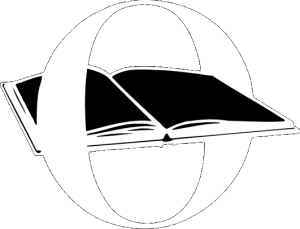by Marilyn Duncan
2005 pb 256 pages
Item # 542
ISBN 1-57274-704-8
This indispensable resource is by an exemplary primary educator and staff developer. Kindergarten teachers, those preparing to teach kindergarten, and faculty in early literacy programs will find that each accessible chapter is packed with real-life examples and anecdotes from a classroom where assessment truly drives instruction. A case study of a kindergarten class from the beginning of the year through the seventh month of school is skillfully woven throughout the book. The teaching and learning of individual children and a whole class of learners comes to life.
Two free items are included: an informative literacy assessment called My Book for the teacher to use with children to gather data, which when completed becomes a take-home book for each child, and a full-color, laminated, child-sized Alphabet Card.

“This text offers a rich and inviting view of kindergarten. I appreciate the author’s belief that every child comes to school with knowledge and that the teacher must build on the strengths of the learner. I especially value the emphasis on collecting information in a manageable way about what each child knows and using that information to guide instruction. I like the idea that children can learn to manage their own learning time. Every kindergarten teacher should read this book.”
—Sharon Martel
Kindergarten and 1st Grade Teacher
Florence Roche School, Groton, MA

About the Author
Marilyn Duncan was a teacher for forty years. Her work was in the classroom with children and as a teacher developer. Marilyn was been the Trainer of Coordinators for The Learning Network®, the general editor for Inside Learning Network Schools (1997) and was involved in large-scale district initiatives in Colorado. While she worked in all areas of education she regards herself primarily as a kindergarten teacher. Marilyn is retired and lives with her husband Peter in Wanaka, New Zealand.
Other Books by the Author
- Literacy Coaching:
Developing Effective Teachers through Instructional Dialogue
Preface
The purpose of this book is to encourage a conversation between the reader and the author about why and how to move students along a continuum of literacy in kindergarten. The Kindergarten Book addresses questions about the kindergarten teacher’s role in literacy learning. The book is based on a set of beliefs about literacy and teaching and learning that are critical to the effective professional development of teachers of young children.
For those of us with experience of kindergarten teaching, this book illustrates how beliefs become the foundation for understanding about learning and teaching.
- Learning occurs best when it is built on learner’s strengths, when we determine what the learner can do, what the learner is attempting to do, and then decide what we need to do next.
- Learning is developmental; as the more knowledgeable other, we develop readers, writers, mathematicians, and thinkers along a continuum of development.
- Every learner has unlimited potential, and it is our job to realize and release that potential.
- Personal reflection is the key to developing our own learning. Our ability to ask questions of ourselves allows us to make shifts in what we do, and why and how we do it.
The book begins with an introduction. The reader is invited to walk through a kindergarten classroom seven months into the school year. Chapter 1 explores what a teacher needs to understand about the development of a literacy set for kindergarten children. Chapter 2 provides examples of how a kindergarten teacher gathers relevant information about the incoming students, and how the information is valued to determine what individual children know and what they need to know next. Three children are introduced in this chapter as case studies to be followed more closely through the book.
Chapter 3 explores the tools used to monitor literacy learning growth. Chapter 4 discusses organizing the environment to support literacy learning, and Chapter 5 provides guidance in how the environment is introduced in the first weeks of school. Chapter 6 focuses on scheduling the teacher’s time to manage learning.
Teaching for learning is explored in Chapter 7, with an emphasis on how to use the child as a guide to instruction. Chapter 8 describes the support needed for children to progress through the emergent stage of the literacy continuum. Chapter 9 provides examples of how knowledge and skills are developed as children move into the early stage of the literacy continuum. The book ends with Chapter 10, which returns to the author’s beliefs that were introduced above.
The book concludes by revisiting the three case study children to explore their progress seven months into the school year.
Chapter Sheet
Table of Contents
| Preface | |||
| Acknowledgments | |||
Introduction | A day in the life of a kindergarten classroom | 1 | |
Chapter I | The Literacy Set | 15 | |
Chapter 2 | Knowing the Learners | 31 | |
Chapter 3 | Monitoring Student Learning | 60 | |
Chapter 4 | Learning Spaces | 77 | |
Chapter 5 | Managing the First Weeks of | 90 | |
Chapter 6 | Planning My Time to Manage Student Learning | 108 | |
Chapter 7 | The Child Is the Guide to | 128 | |
Chapter 8 | Developing the Knowledge and | 142 | |
Chapter 9 | Developing the Knowledge and | 167 | |
Chapter 10 | Teacher Reflection: Thinking | 196 | |
APPENDICES |
|
| |
Appendix A | Instructions for Using My Book | 215 | |
Appendix B | Blank Monitoring Form: Letters, | 219 | |
Appendix C | Mooney’s Characteristics of | 220 | |
Appendix D | The Literacy Record | 222 | |
Appendix E | Essential Word List | 224 | |
Appendix F | Icons for Student Plan Sheet | 225 | |
Appendix G | Blank Monthly Plan Form | 229 | |
Appendix H | Blank Weekly Plan Form | 230 | |
Appendix I | Teacher Daily Plan Sheets | 231 | |
Bibliography |
| 233 | |
Index |


